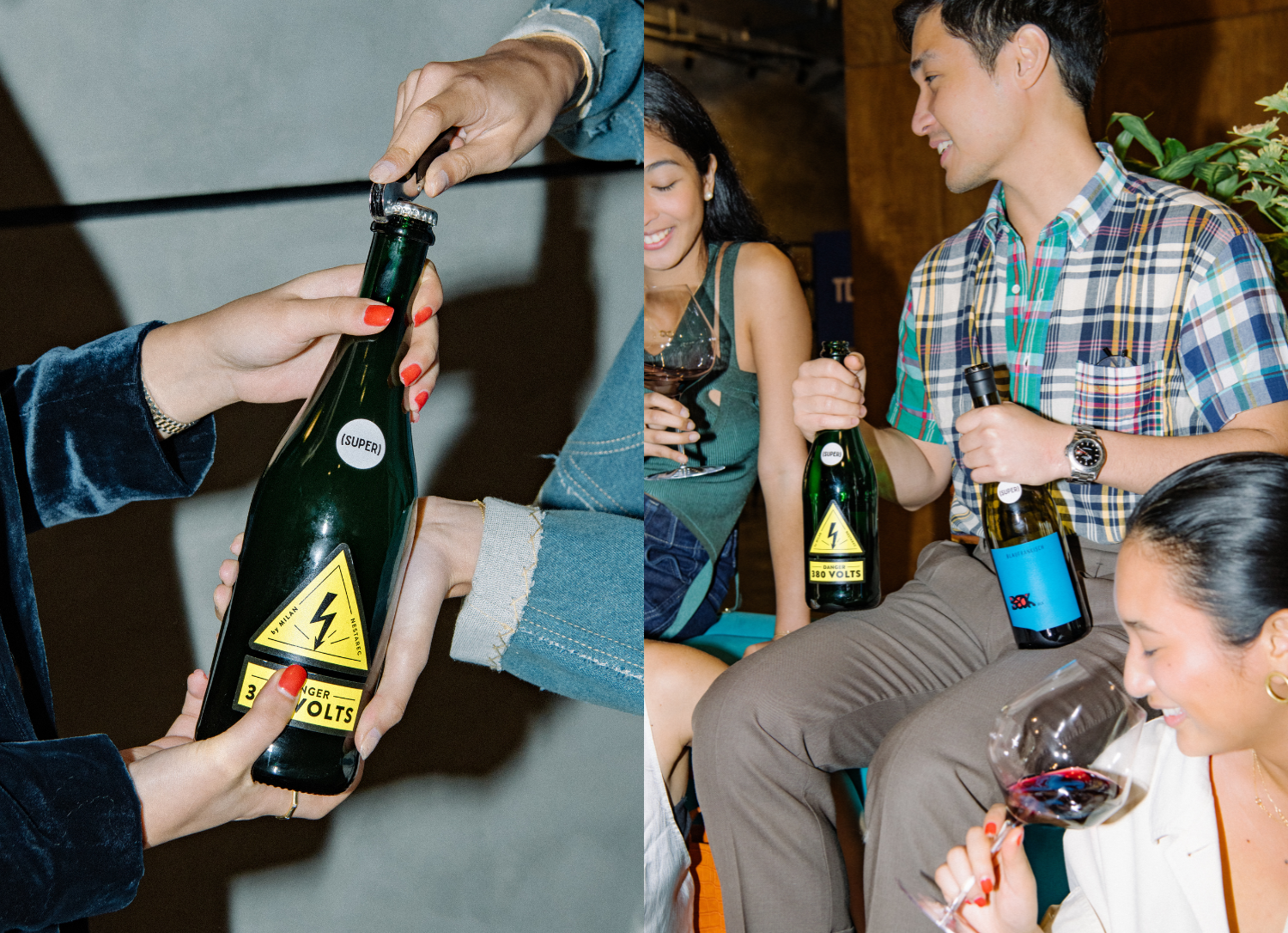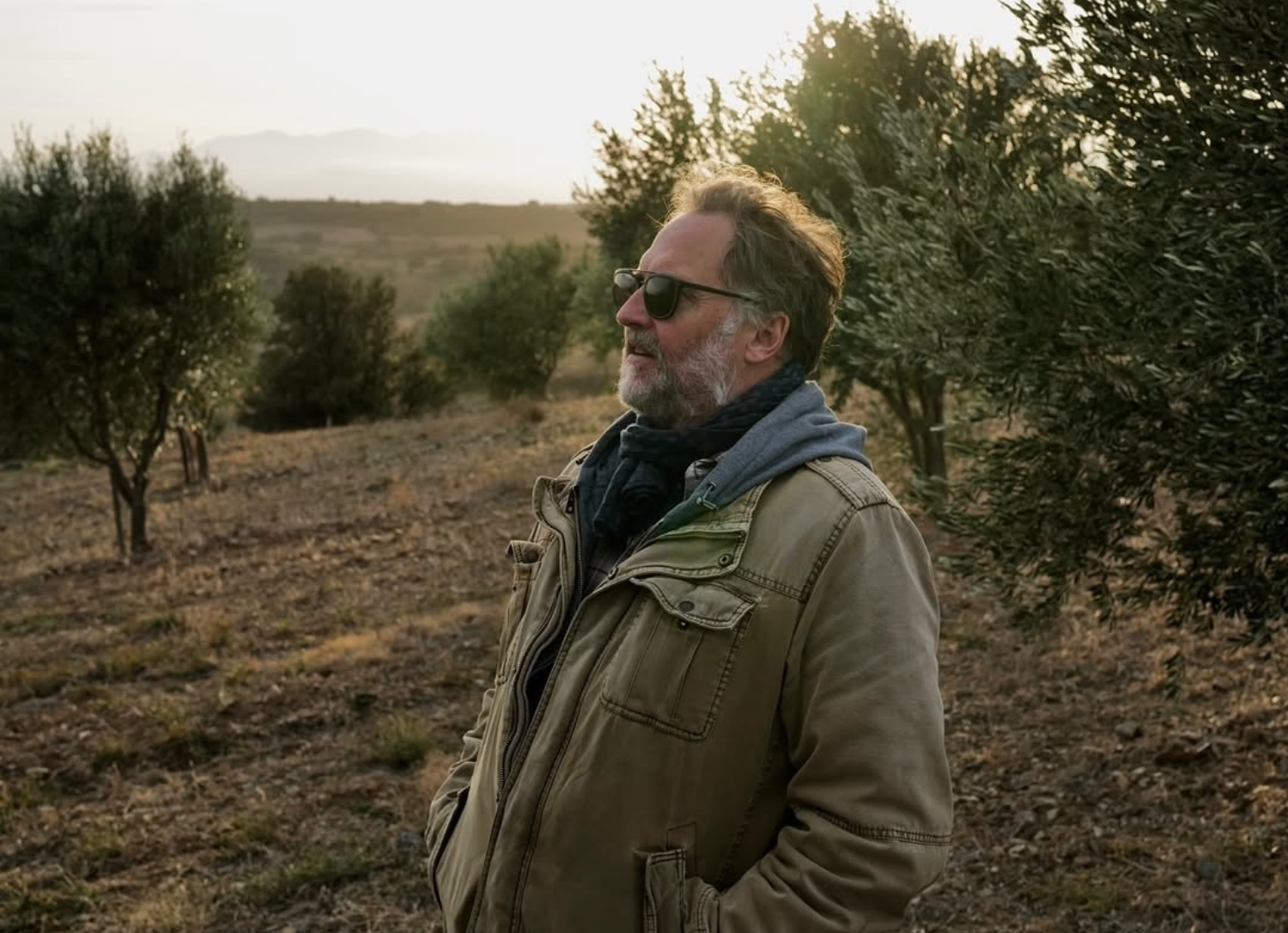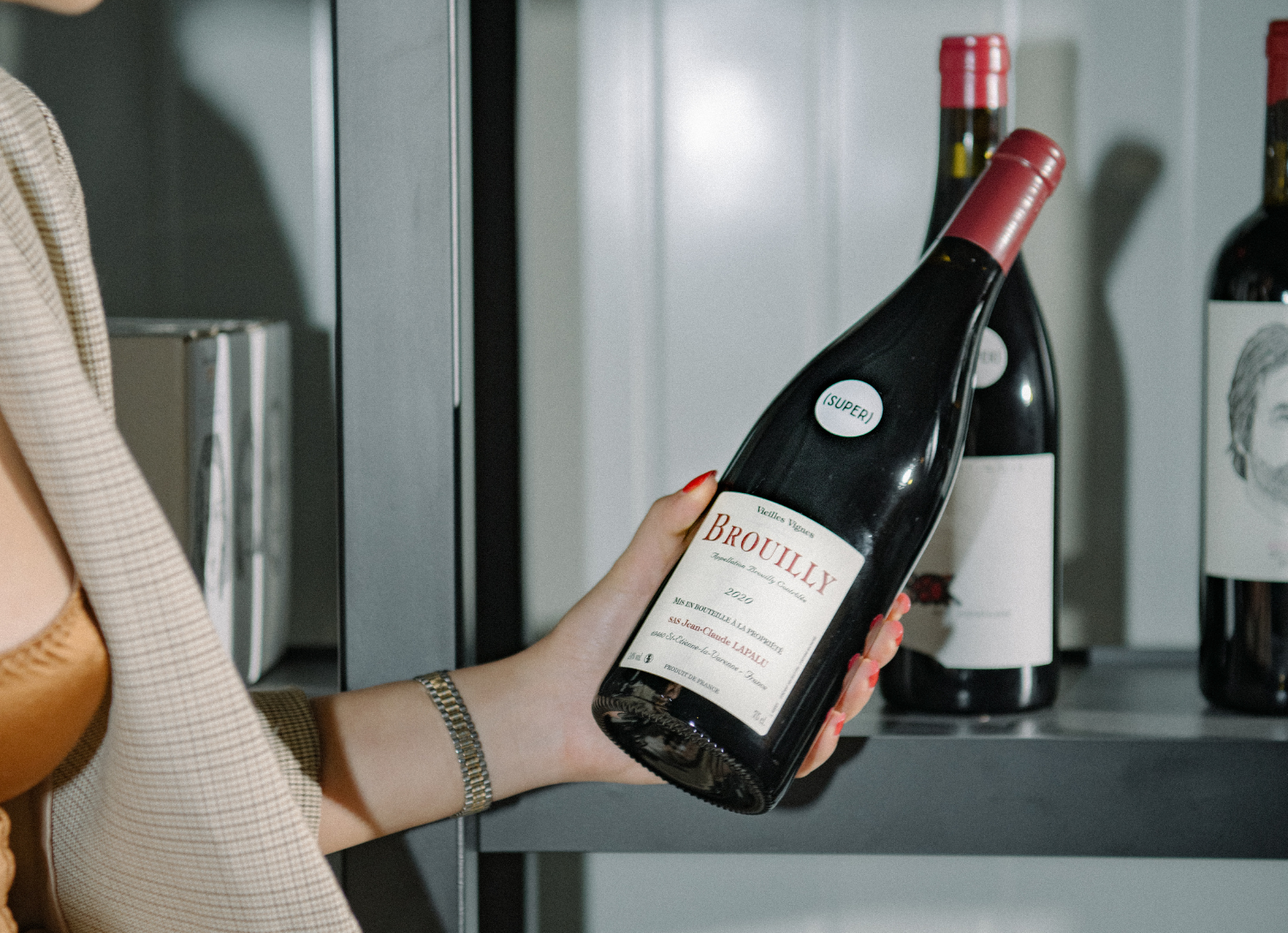Like any industry, wine naturally comes with its own language, with plenty of wine words and concepts that may confuse beginners And while natural wine is part of this same world, it’s broken so many barriers and reintroduced so many practices and ideas that even a seasoned wine lover may not be familiar with the new terms that come with it.
Biodynamic? Orange wine? Glou glou? This is your guide to 13 of the most commonly-used terms and concepts you’ll hear in conversations and tastings with natural wine, and what they mean—especially handy when you want to buy natural wine in Manila!
First: What is Natural Wine, anyway?
Not quite a concrete, defined category, it may be more accurate to describe natural wines as a movement or philosophy of low-intervention winemaking. By low-intervention, we mean that winemakers aim to create the purest expression of a grape and its terroir: (little to) nothing is added and nothing is taken away from the wine. They are all organic, sometimes biodynamic, and only a minimal amount of sulfites are added if at all, only for the sake of stabilization. That said, natural wines are also called raw wines or low intervention wines.
There are many ways that natural wine sets itself apart—to the point we have a whole article on the differences between natural wine and “normal” wine. Here though, we break down the most commonly-used words and terms you’ll hear talking about natural wine for you:
Organic
When a wine is certified organic like all natural wines are, this means that the grapes used in it were planted and grown without the use of any synthetic or chemical fertilizers, herbicides, and pesticides—-this minimizes pollution, enhances the health of the soil, and promotes biodiversity in the area. Beyond this, many organic winemakers also take up practices such as composting, cover cropping, and manual harvesting (instead of using machines). And beyond it being better for the environment, a UCLA study has found that experts also rate organic wines higher than wines made conventionally!
Biodynamic
If organic winemaking seeks to reduce its impact on the environment through sustainable practices, biodynamic winemaking is an offshoot of this philosophy that takes it even further by considering a vineyard as its own ecosystem and approaching it more holistically, and in some cases, spiritually. Some common practices in biodynamic winemaking include introducing companion plants and livestock to vineyards to encourage biodiversity, using herbal and mineral preparations (like cow horns stuffed with manure) to enrich the soil and support their farms, and even following astronomical calendars to assess the best times to plant and harvest.
Just remember: all biodynamic wine is organic, but not all organic wine is biodynamic. If it’s something you’d like to try, you can buy natural wine in Manila from winemakers like Gut Oggau and Judith Beck from Austria, Pierre Frick and Andrea Calek from France, and Dario Princic and Radikon from Italy.
Funky
Natural wine is made differently from the bottles we typically see on a supermarket shelf. And while natural wine will often taste approachable just like a well-made conventional wine, there are many bottles out there that embrace the inherent funkiness that comes with fermentation. This is why natural wine is associated with funk, or unusual and complex notes deviating from the usual fruit and oak flavor profile we’ve come to expect. In the wine world, “funky” is now synonymous with “unconventional.”
Unconventional notes include everything from savory notes like cheese, soy sauce, kimchi, and yogurt to even earthy and musty aromas like a barnyard or even horses! Many of these are notes that would be considered faults in something conventionally made, but are embraced in natural wine. But take note: there are levels of funkiness—there are other bottles of “wild” wines out there that go completely off the rails, too!
Unfined/Unfiltered
When you buy natural wine, you may look into the bottle and notice sediments at the bottom or that the wine itself is cloudy or hazy. These may be a cause of concern for conventionally made wine, but this is fairly common in natural wine made with low intervention—many but not all makers will skip fining or filtering to avoid adding or removing anything intrinsic to the wine.
Both fining and filtering are processes that remove smaller particles in wine and make it clear. The former introduces a fining agent (most commonly egg whites and bentonite clay) that binds with the sediments in the wine and settles heavily at the bottom and makes them easy to remove. Meanwhile, filtering forces the wine through a medium with tiny pores, removing any particle bigger than the pore size. Both are methods that can affect not just the clarity of the wine, but also the taste—it can remove tannins, as well as certain notes and aromas too!
Glou Glou
When a wine is light, fruity, and distinctively chuggable, we would normally call it “easy drinking.” In the world of natural wine, many have taken to calling it “glou glou,” or the French onomatopoeia equivalent of “glug glug:” basically, the sound wine makes when you pour a lot of it right out of a bottle (or down your throat).
Juicy, playful, and light (in both body and alcohol), glou glou wines are practically made for sipping under the sun, enjoyed casually or on their own—but usually, they have a bright acidity that make them perfect with food. And any kind of wine can be glou glou, from sparkling and white to orange and red!
Petillant Naturel or Pet Nat
Pet Nat, short for Petillant Naturel (or “naturally bubbling” in French) is a type of sparkling natural wine that only goes through one round of natural fermentation—and said round actually gets interrupted to put the wine in the bottle, which is where the process finishes. Both the base wine and bubbles are created together in the bottle itself. This is actually the oldest, original way of creating sparkling wine that predates the traditional method in which Champagne and Prosecco are made in two rounds of fermentation.
Pet Nat wines are usually cloudy or hazy, with a very light fizz to complement their playful, easygoing profiles ranging from uncomplicated to funky—they’re very casual in comparison to the dressier occasions we associate sparkling wine with! If that’s something you want to try, you can buy Pet Nat natural wine in Manila here at (Super)Natural.
Skin Contact and Orange Wine
You’ve heard of wines that are red, white, or a rosé, but if you’re new to natural wine, you may be surprised to hear that there are also orange wines out there. These fall under skin contact wines, which are essentially when wine grapes are fermented with their skins, stems, and seeds still on. This part of the process is a given for red wines and uncommon for whites, so when someone says "skin contact," they're almost always referencing the latter or orange wines.
Fermenting or macerating on the skins generally gives the resulting wine more body and tannins—do it long enough, and it gets a distinctive orange colors and puts it under the orange wine category. Do it for only a short while though, and they can very well still fall under white wine.
When you want to buy orange wine in Manila, just take note that it can range from approachable and easy to a bit funky to all out wild.
Native or Indigenous Grapes
You may be familiar with international grape varietals like Cabernet Sauvignon, Chardonnay, and Merlot, but did you know that there are actually thousands of wine grape varietals in the world today? The majority of them are native grapes, or grapes indigenous to specific countries and regions—either originating from there or having long grown naturally without human cultivation. It’s common for native grapes to only be grown or used in wine in their region of origin. That said, many natural winemakers gravitate towards using native, celebrating their unique characteristics and how they create distinctive expressions of their terroir.
More famous native grapes include Austria’s Blaufrankisch, Zweigelt, and Grüner Veltliner, which you’ll see in bottles by Austrian natural winemakers Gut Oggau, Judith Beck, and Christian Tschida. But if you want to go offbeat, you can also try Japanese grape varieties like Muscat Bailey A and Koshu used in wines by Coco Farm & Winery.
Spontaneous Fermentation
In “normal” wines, it’s common practice to introduce lab-made yeasts and starters to crushed wine grapes in order to start the beautiful process we call fermentation. This is not the case in natural wines, which is best known for spontaneous fermentation—that is, using only wild yeasts already present in the air and in the wine grapes themselves to start the process of turning sugars into alcohol with minimal intervention from the winemaker. Despite the fact that spontaneous fermentation essentially lets nature do the work, it does require a lot of care and attention that makes it better suited for smaller-scale wineries.
Wines created through spontaneous fermentation tend to taste more vibrant and can actually create a more diverse range of tasting notes, too! And more interestingly, many describe wines made through this process to have a taste with more of a sense of place and terroir.
Carbonic Maceration
Some natural wines are described to taste almost like candy, with a juiciness and low amount of tannins that make them so easy to drink. One method in winemaking that many natural winemakers use to create this effect is called carbonic maceration. Most famously done in wines from France’s Beaujolais region, it’s the process of fermenting whole, intact grape bunches in a closed environment rich in carbon dioxide before crushing them to extract their juices. Another bonus from the process: the wine is ready to drink much sooner, with less aging required.
For a quick taste to show you the difference, we’d recommend bottles like Vinyes Tortuga’s Doolittle or Chateau Meylet’s Maceration Carbonique Cuvee Carbone.
Amphora
Remember those pots you’d see in Ancient Greek art? These are called amphora, and millennia ago, they were among the first vessels used to store and age wine. Today, they’re making a bit of a comeback among natural winemakers, especially in fermenting and aging skin contact or orange wines. Unlike the traditional oak barrels that would typically be used, amphora are neutral and porous—great for letting some oxygen in without imparting any flavor of its own. Wine journalist-turned-winemaker Sylvie Augereau actually uses old Georgian amphorae to great effect in producing her bold orange wine Peaux!
Zero/Zero
On a bottle of natural wine, you might find the term zero/zero, perhaps alternatively written as O/O or OO. When you do, this is the winemaker’s way of indicating how minimal intervention was in making the wine: zero of anything (like lab-made yeasts, sulfites, sugars, and fining agents) was added, and zero was taken away (be it through filtration or other methods). This is considered the more extreme way to make natural wine—closer to a Platonic ideal of what a natural wine would be and how it should be produced. Natural winemakers who produce zero/zero bottles include Zeroine (of course!), Domaine Nøvice, Radikon, and Maria & Sepp Muster.
We would like to add, however, that there is nothing wrong with not adhering to this by the letter, with many natural winemakers understandably adding a minimal amount of sulfites or lightly filtering their wines to stabilize them.
Where to buy natural wine in Manila
The best way to learn more about natural wine is to simply try more of it! Shop natural wine in Manila at (Super)Natural, where we import and sell our favorite natural wine brands from respected makers all over the world. You’ll find natural wine of all types here, ranging from glou glou and easy drinking to wildly funky and complex, or simply from good ol’ reds, whites, and rosés to orange wine and pet nat. Buy natural wine and place your order before 2 PM on weekdays and enjoy same-day delivery in Metro Manila!



